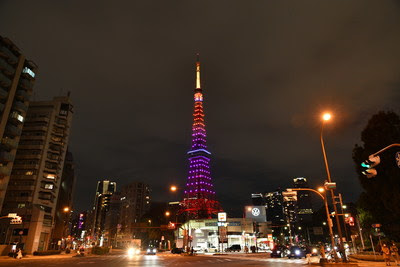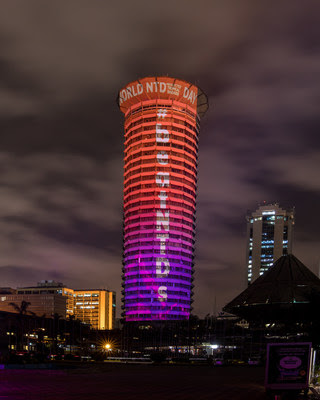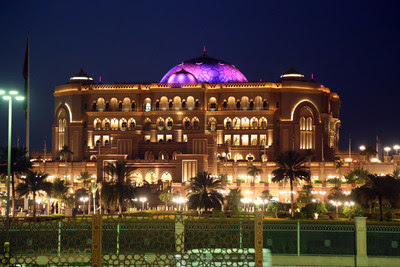JOHANNESBURG, Feb. 1, 2022 /PRNewswire/ — IHG Hotels & Resorts, one of the world’s leading hotel companies, has opened voco The Bank Johannesburg Rosebank – the first voco property in Africa. As one of IHG’s newest hotel brands, voco combines the reassurance of a global brand with the informality and charm of an individual hotel.

The Bank, Rosebank’s striking new architectural gem, is a short distance from the Gautrain (Metro Express) and surrounded by the buzzing walk-work-play district of Rosebank. voco The Bank Johannesburg Rosebank takes space, sophistication and artistry to the next level, with a range of beautifully appointed rooms and suites featuring the thoughtful, relaxed and unstuffy design so characteristic of the voco brand, as well as an enviable collection of original local artwork.
An upscale sanctuary in the heart of one of the city’s trendiest districts, an international business hub renowned for its shopping, art and design, and exclusivity, voco The Bank Johannesburg Rosebank delivers on the promise of its name – ‘to invite’ or to ‘come together’ in Latin.

Haitham Mattar, Managing Director, India, Middle East and Africa, IHG said: “As part of our growth strategy in Africa we have partnered with Valor to expand our footprint on the Continent. Valor has been our long-term partner in the United States and the United Kingdom, and we are delighted to open our first voco hotel in Johannesburg, South Africa. voco The Bank Johannesburg Rosebank is a best in class property and a great entry to market for IHG. voco The Bank is a distinct hotel with an individual character in the buzzing “walk-work-play” district of Rosebank and will be a great addition to the destination. This new opening in the trendy hub of Rosebank adds to the momentum we are building in the IMEA region with six voco hotels openings in key cities.”
The 131-room hotel embodies the characteristics of voco with exclusive features and distinctive hallmarks, setting it apart for a memorable stay. Every guest will experience the voco signature ‘come on in’ warm welcome, promising a swift and simple check in, with dedicated voco hosts available throughout the guest’s stay as resident experts, and a locally inspired welcome treat. As part of the transformational works carried out at the property, the guest rooms benefit from the voco design concept with thoughtful comforts like cosy bedding made from 100% recycled materials, Antipodes high quality organic amenities in larger dispenser bottles, and high-speed Wi-Fi, Smart TVs, executive desks and in-room refreshments. So, guests can relax and indulge in some ‘me time’ when they stay at voco.
Double volume ceilings, chic modern bathrooms and valet parking complete this distinctive upscale experience, while business travellers will be delighted with thoughtful features such as the in-room hand-held clothes steamers and large workspace with international adaptors and USB ports.
For a taste of ‘voco life’, the exciting and modern mid-century inspired all-day eatery, Proud Mary, is located on the ground floor of The Bank building, while Workshop17, a haven for remote working, can be found just one floor up. voco Johannesburg Rosebank also features a fully equipped gym.
Guests staying at voco The Bank Johannesburg Rosebank can enjoy in-room dining selecting from Proud Mary’s innovative menu featuring delicious small plates, salads, grills and a boutique wine list you would find at no other eatery in town.
With its strong commitment to ensuring the highest levels of sustainability, reflected in the multi award-winning building’s use of mainly renewable energy sources and voco The Bank Johannesburg Rosebank’s leading global sustainable practices, guests will be assured that their stay is both the epitome of comfort whilst being easy on the planet.
“We know that nowadays guests like to feel that they are making a difference,” said Jessica Redinger, General Manager of voco The Bank Johannesburg. “We’ve gone out of our way to minimise the impact of our hotel on the environment, using best-practice sustainable guidelines where-ever we can. But it is just important for us to look after our guests while also looking after the planet. So, we have not sacrificed our world-class amenities and the comfortable and friendly guest experience that people have come to expect from voco.”
Occupying six floors of this mixed-used building, voco The Bank Johannesburg Rosebank shares this innovative space with signature tenants such as Rand Merchant Investments, Bespoken Man Barbers and Tailor Me, with the Rosebank Mall, The Firs and The Zone shopping districts being right on its doorstep.
For guests on the clock, private Workshop17 meeting and event spaces can be booked seamlessly through voco The Bank Johannesburg Rosebank.
Download images here
Logo – https://mma.prnewswire.com/
Photo – https://mma.prnewswire.com/















